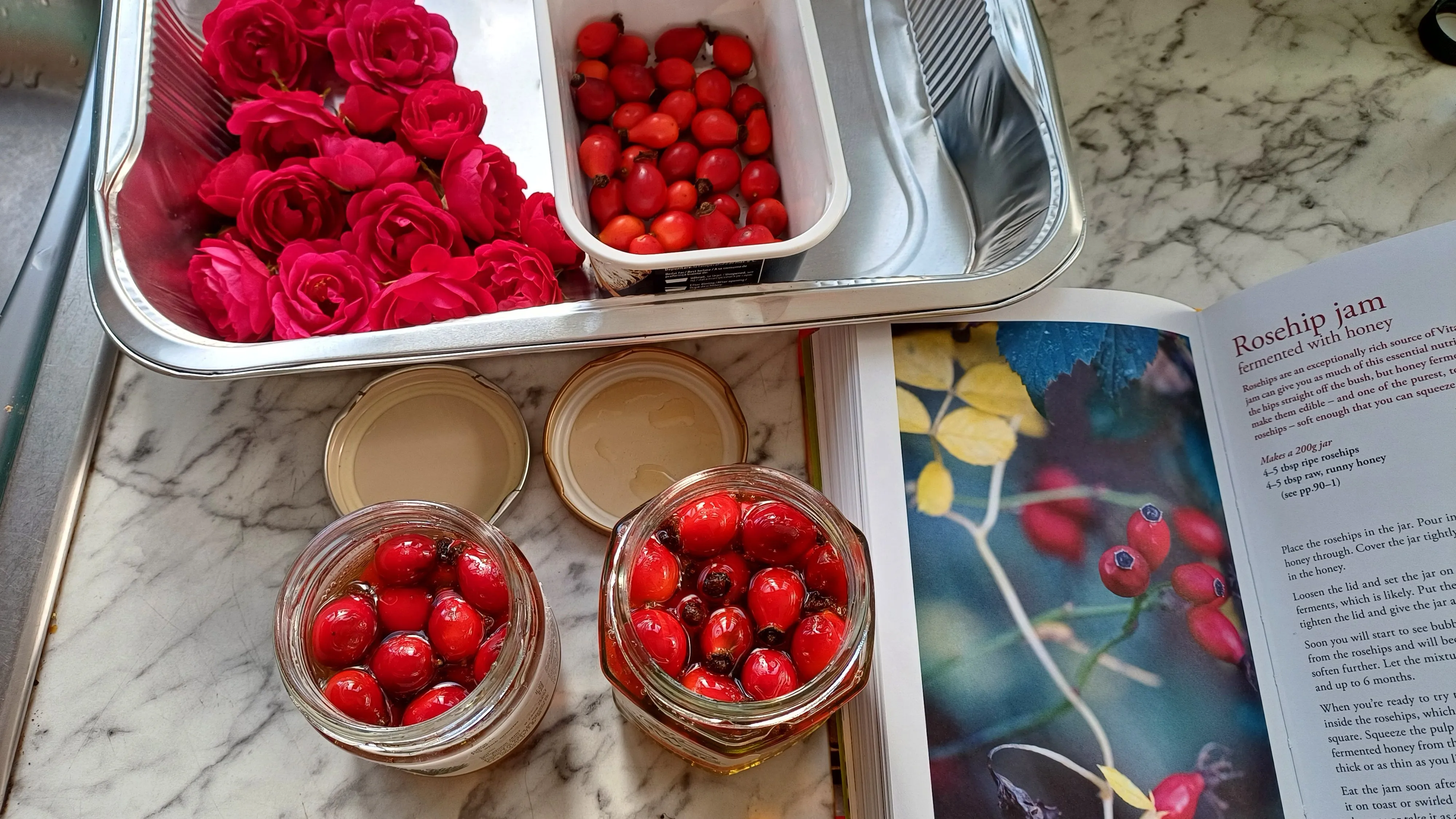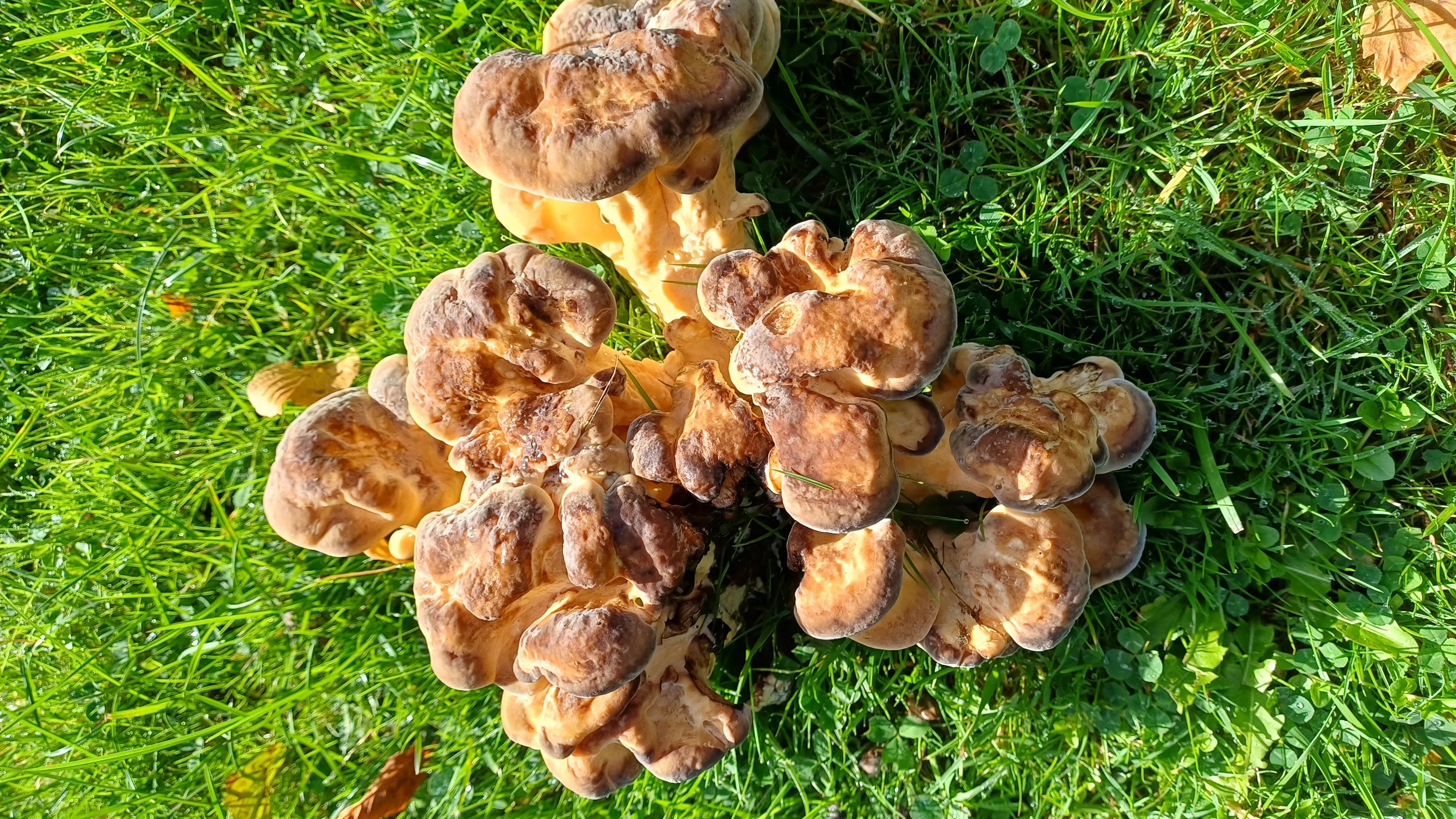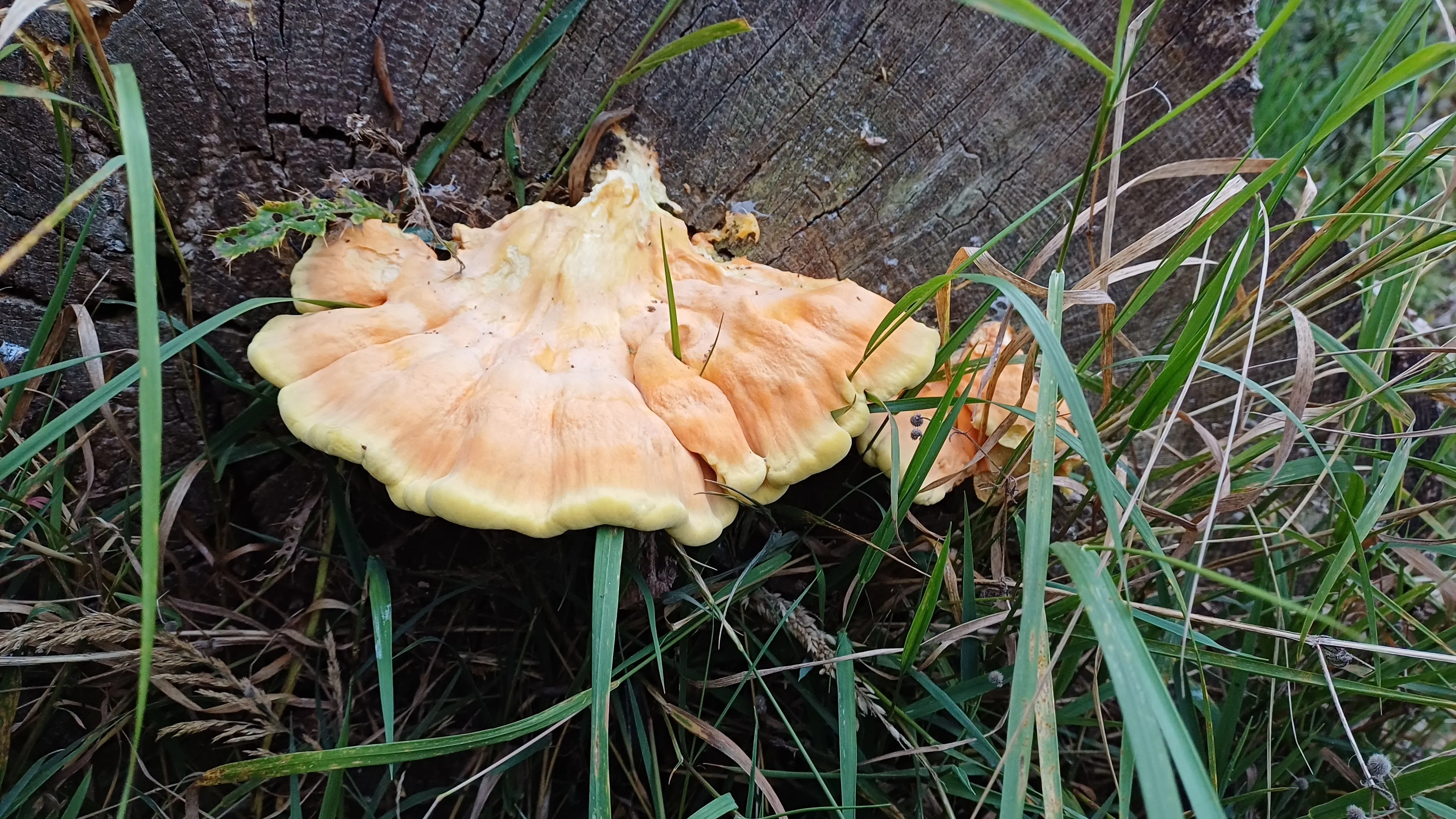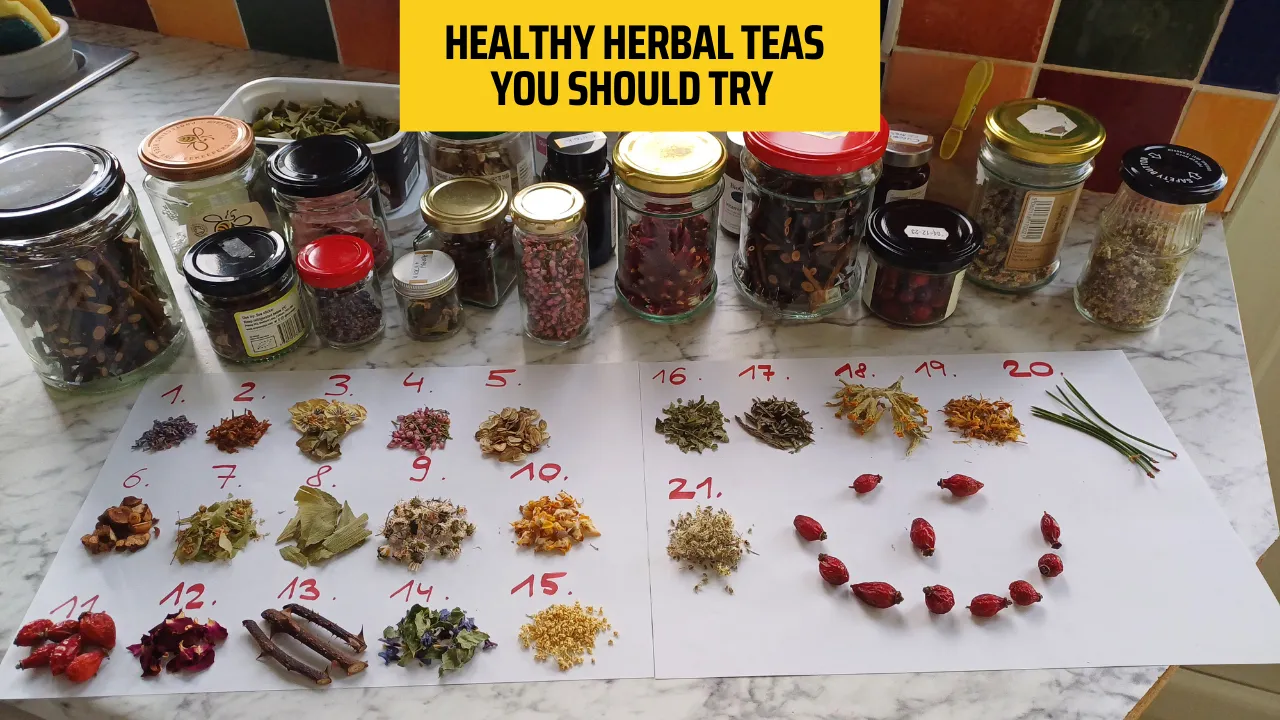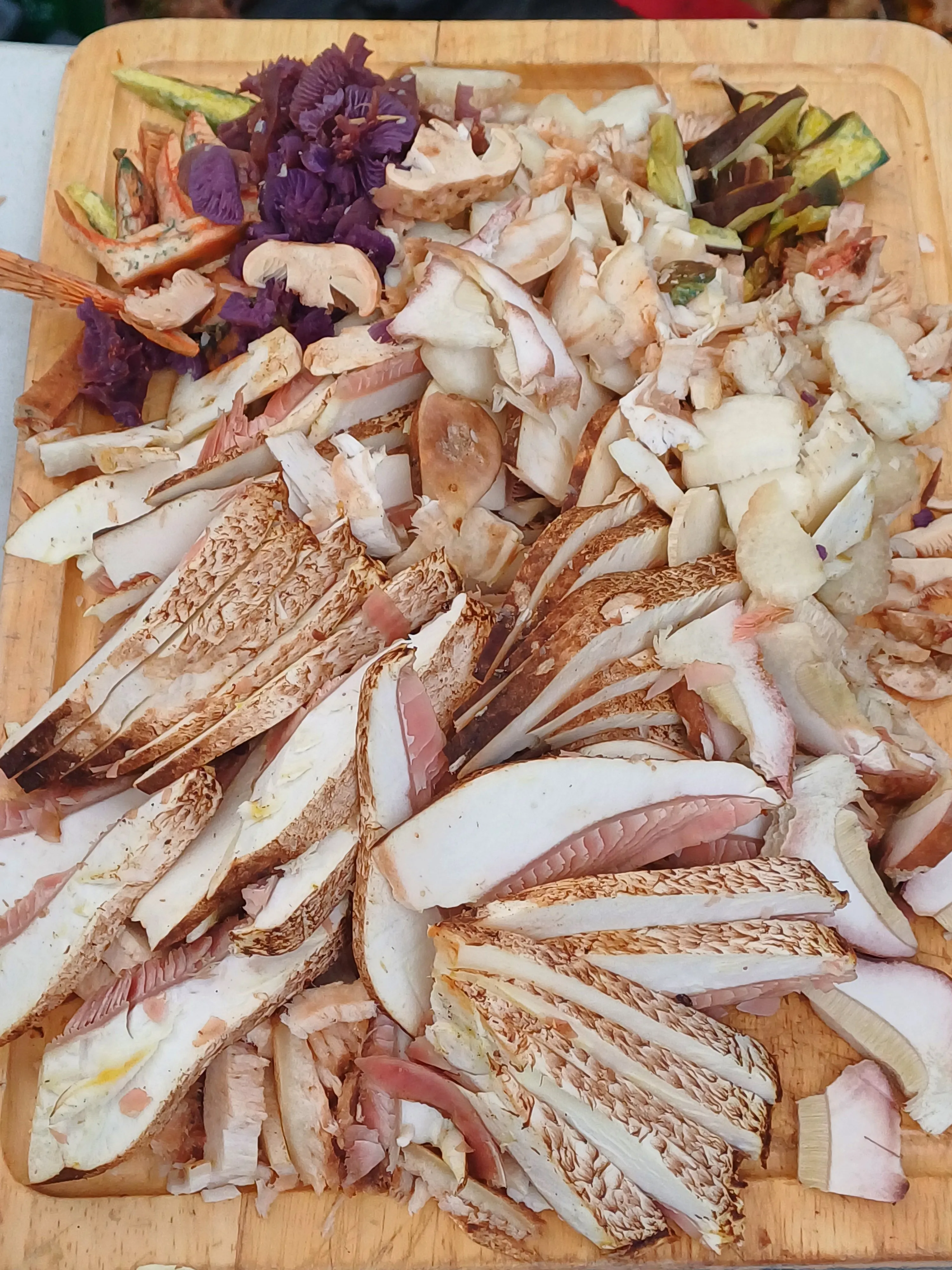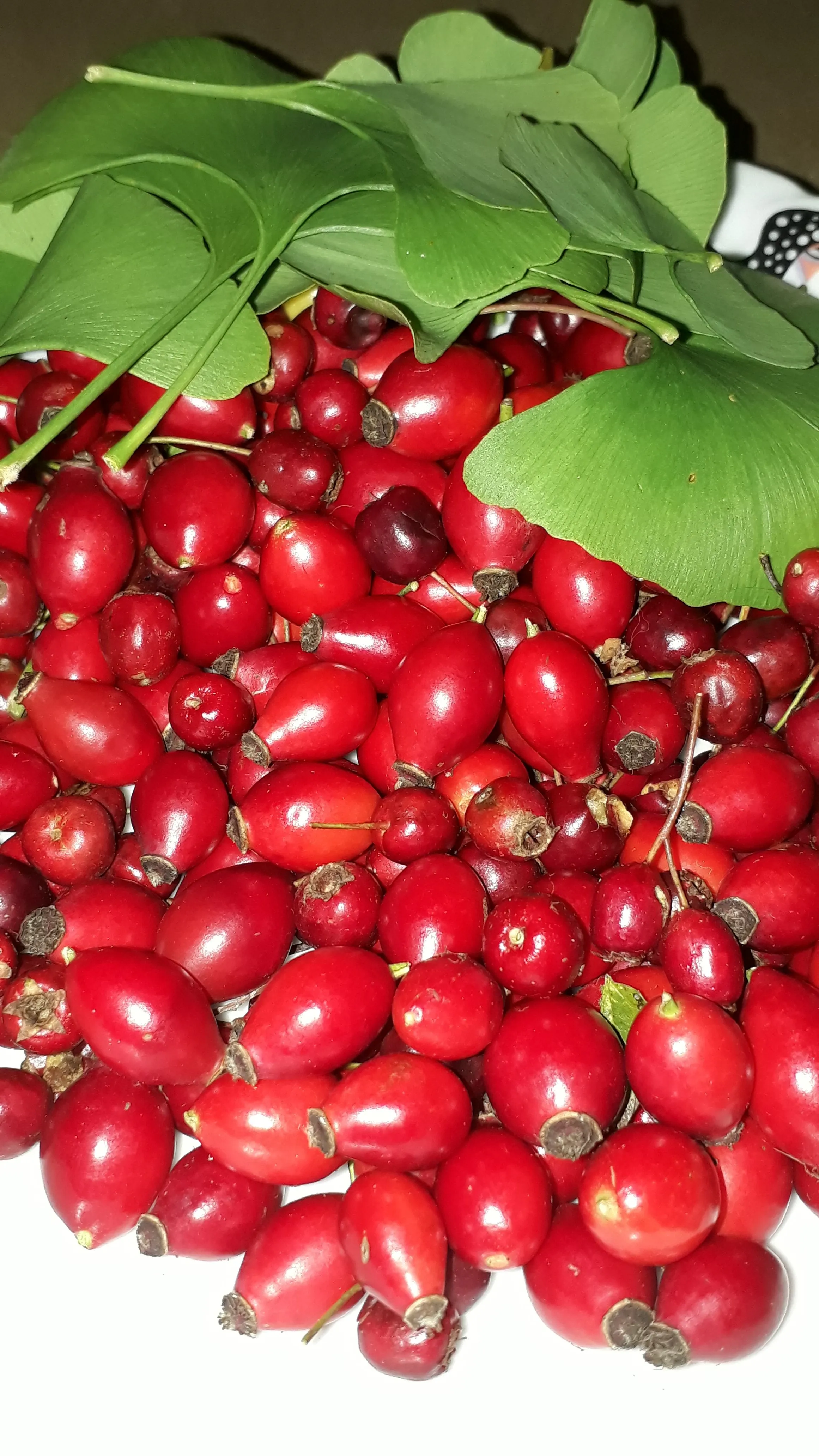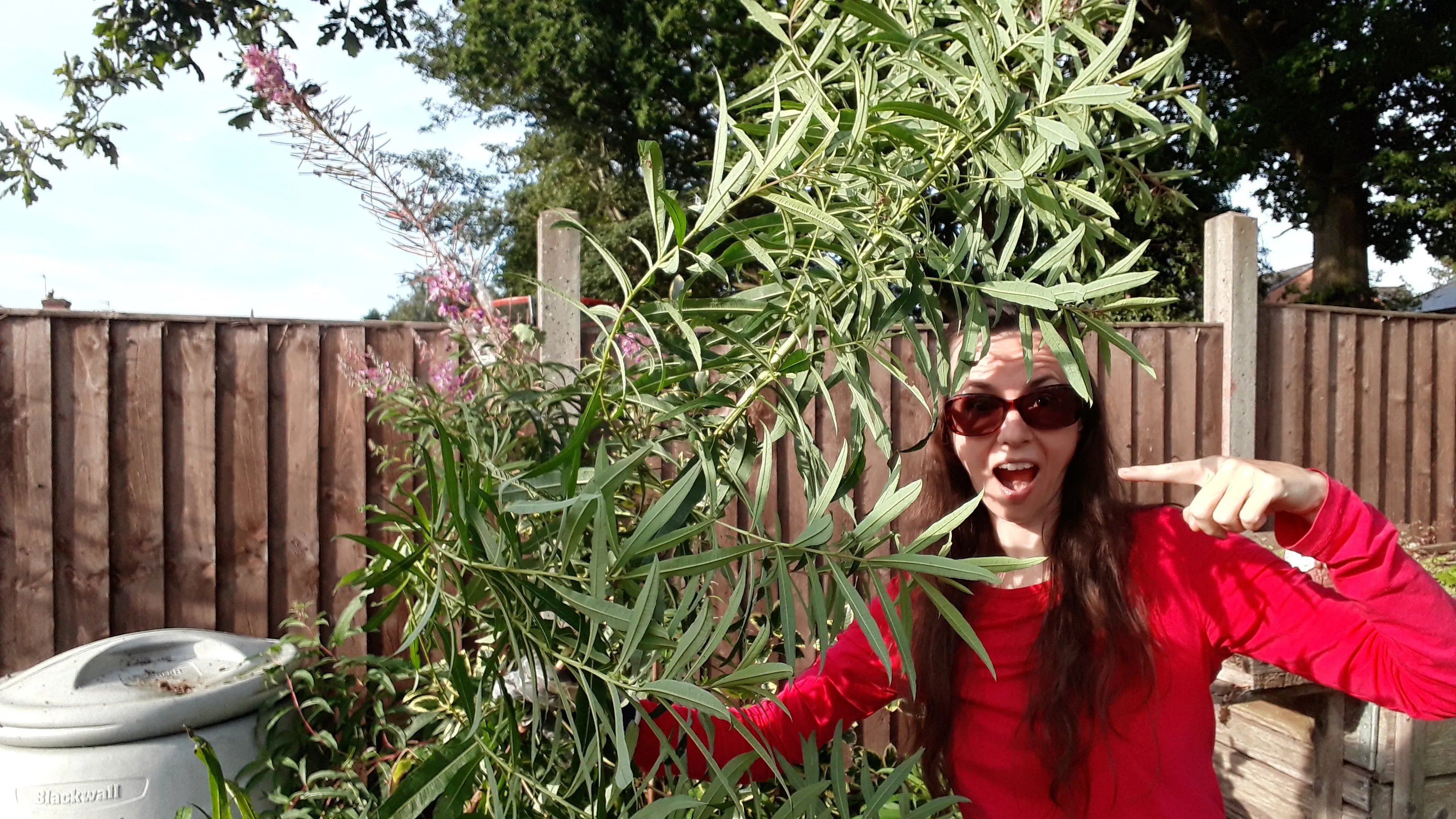🌱Unbelievable Microgreens - Nature's Tasty Superfoods
🌱 Microgreens are salad leaves that are picked at a very early stage. Larger than sprouts and smaller than 'baby' salads. Ideal for those with limited garden space or for growing in containers on patios or on a windowsill. They are a very quick and easy way to grow fresh salad at home.
🍃 They have much stronger flavours than sprouts, with a wide range of leaf shapes, textures and colours.
Also low in calories and high in antioxidants, minerals, and vitamins, so they're a great way to add nutrients to your diet.
💪 Microgreens are at their nutritional and flavourful best when they begin to display adult-size leaves. They have much higher concentrations of vitamin C and health-promoting phytochemicals when grown in the light, compared to sprouts, which are typically grown in the dark.
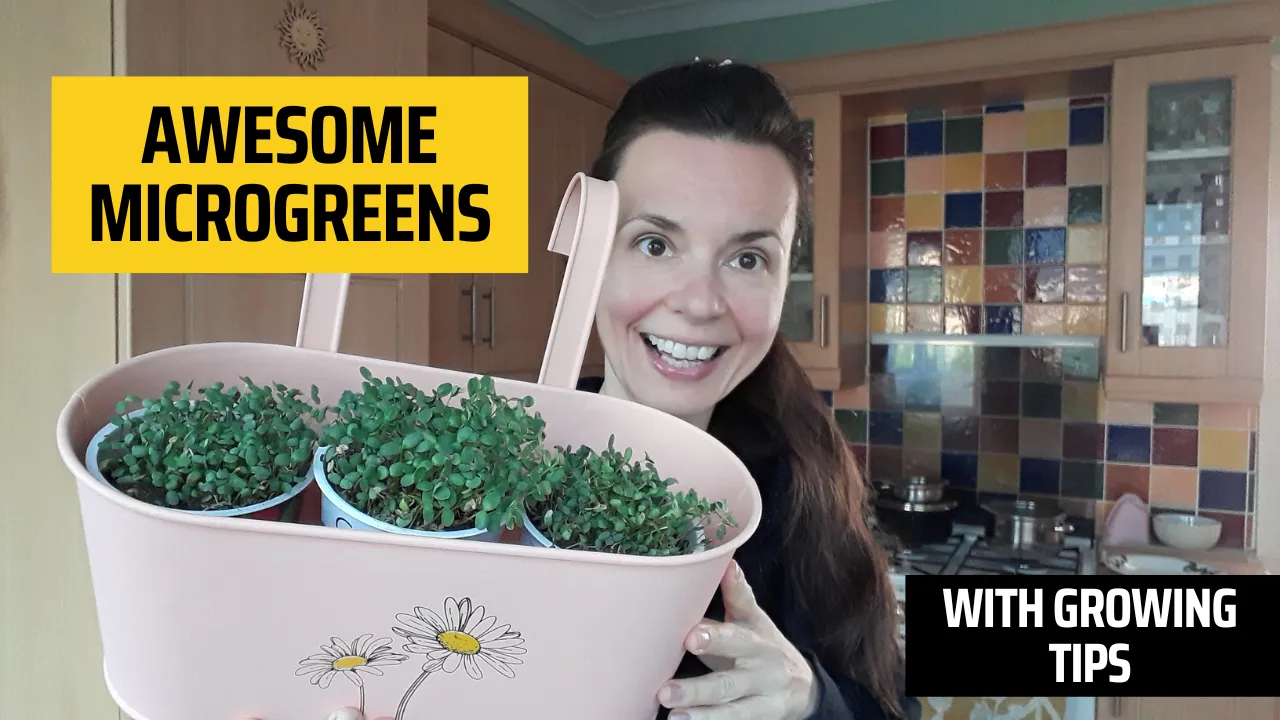
❓Where did I get an inspiration from ❓
- I'm sharing some insights from "How To Grow Microgreens" book by Fionna Hill
- Growing Microgreens by Garden Organic (top tip is Amaranth)
- The Vegetable Grower's Handbook by Huw Richards (top tip is Chickpea)
- And Abel & Cole where I've seen Buckwheat Lettuce
🌱 These crops are:
- Immediate and practical, most varieties are ready in 7-10 days, and you can grow them in winter too
- Packing a powerful nutritional punch, containing higher levels of active plant compounds than mature crops
- Easy to grow
- Great in the kitchen
🪴To grow microgreens you will need a small tray of multipurpose compost, some seed and a windowsill. There are many seeds that can be grown as microgreens.
⚠️ The first thing is to find a suitable source of seed. It's very important that you select a source of seed that says "organic", "untreated" or "suitable for sprouting". This is because a lot of seed sold for growing in your garden is treated with pesticides which will still be in the plant when it is still small.
✅ Alternatively, lots of seeds used as spices in Asian cooking can be grown as microgreens and this is very cheap too!
TIP: Using a layer of vermiculite over the compost will keep the microgreens clean.
🥗 Fresh is Best
Growing microgreens allows the production of high-quality, risk-free food. The leaves have high nutritional and biological values. Grown at home, they are harvested immediately before their use and so are fresh, with their nutritional and medicinal qualities intact.
Examples
🌱 Pea Sprouts
Have a delicious flavour. They taste like slightly peppery nutty peas.
Dried green peas will be much cheaper than buying a packet of seed.
Soak overnight then sow in compost. Sow about a pea's distance between them and cover them with a pea's depth of compost. They will sprout and be ready in 3-4 weeks. Snip them off when they are about 10cm tall just above the lowest laves.
Some will grow again for a second crop.
I've gone crazy this year and have pea sprouts everywhere, in my greenhouse and also outside in the garden.
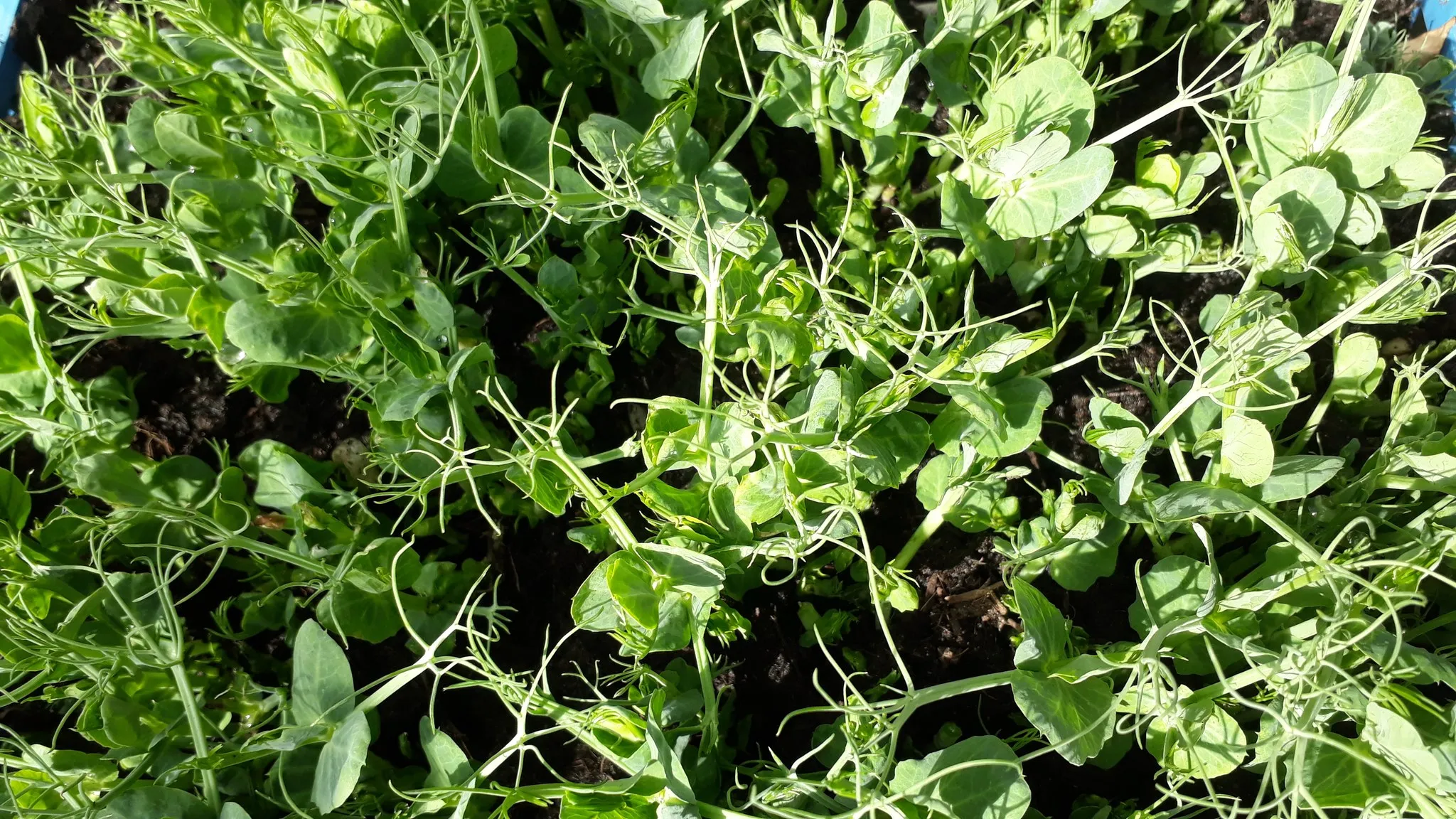
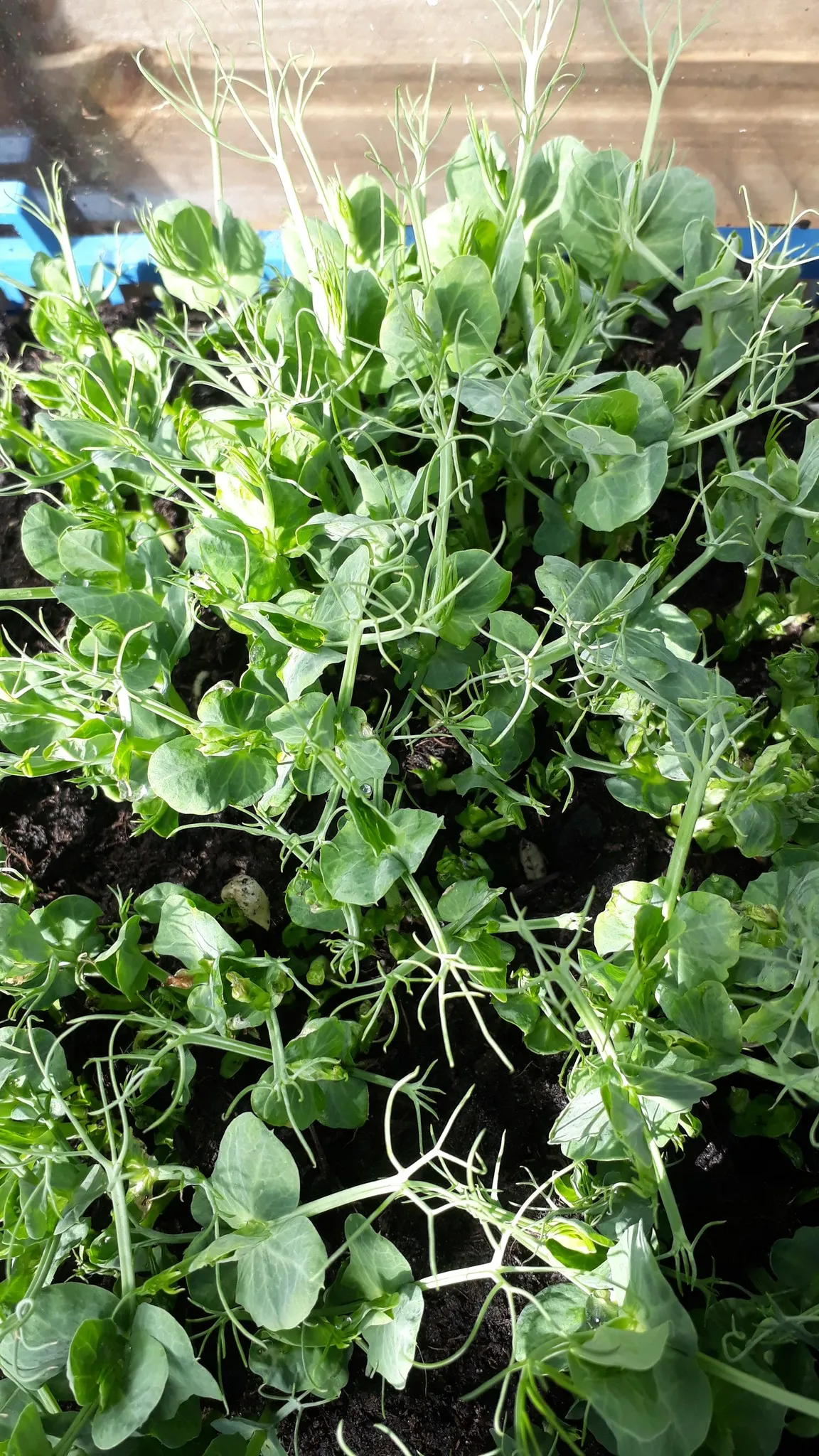
🌱 Haloon
Is an Indian type of cress. The seed can be bought very cheaply as a spice from Asian grocers. Sow about 2 teaspoons of seed into a small tray and cover very lightly with compost. Water gently and leave on a windowsill. You can eat them in a week's time or leave them longer to get bigger. Haloon has a mild peppery taste.
🌱 Kale
Is a delicious eaten as a baby leaf. Red winter or Ragged Jack works very well and has an interesting shaped leaf. Sow half a teaspoon in a tray as above and it should be ready in 3 weeks.
🌱 Chard
Which you may have seen the large leaves grown as a type of spinach in vegetable patches. They taste delicious eaten as a small salad, and ifyou get them rainbow type they look very pretty on a plate.
🥄 Sow 2 teaspoons of seed into a small tray, and cover with about a seed's depth of compost. Water gently and leave on a windowsill. They should be ready in about 3-4 weeks. They are most tasty when the first set of true leaves develop. This is the set of leaves after the seed leaves that come out when the plant first emerges. You can sow more chard into the same container after you harvest.
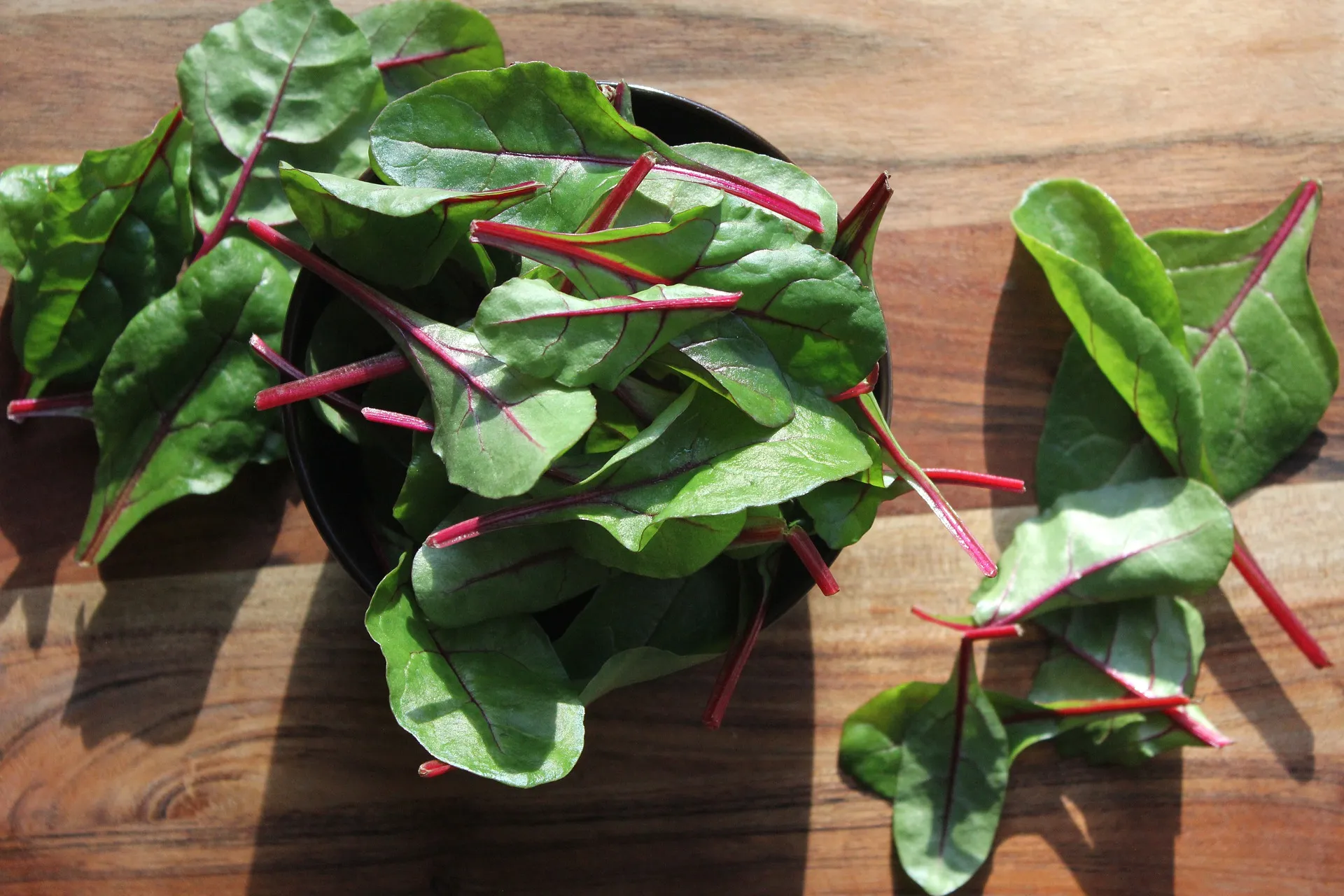
🌱 Mustard
Is a very easy to grow green, that is ready to eat in 2-3 weeks. You can use the seeds that are sold in Asian stores for cooking which makes it very cheap.
🥄 Sow 2 teaspoons of seed into a small tray, and cover with about a seed's depth of compost. Water gently and leave on a windowsill. They should be ready in about 2-3 weeks.
They are most tasty when the first set of true leaves develop.
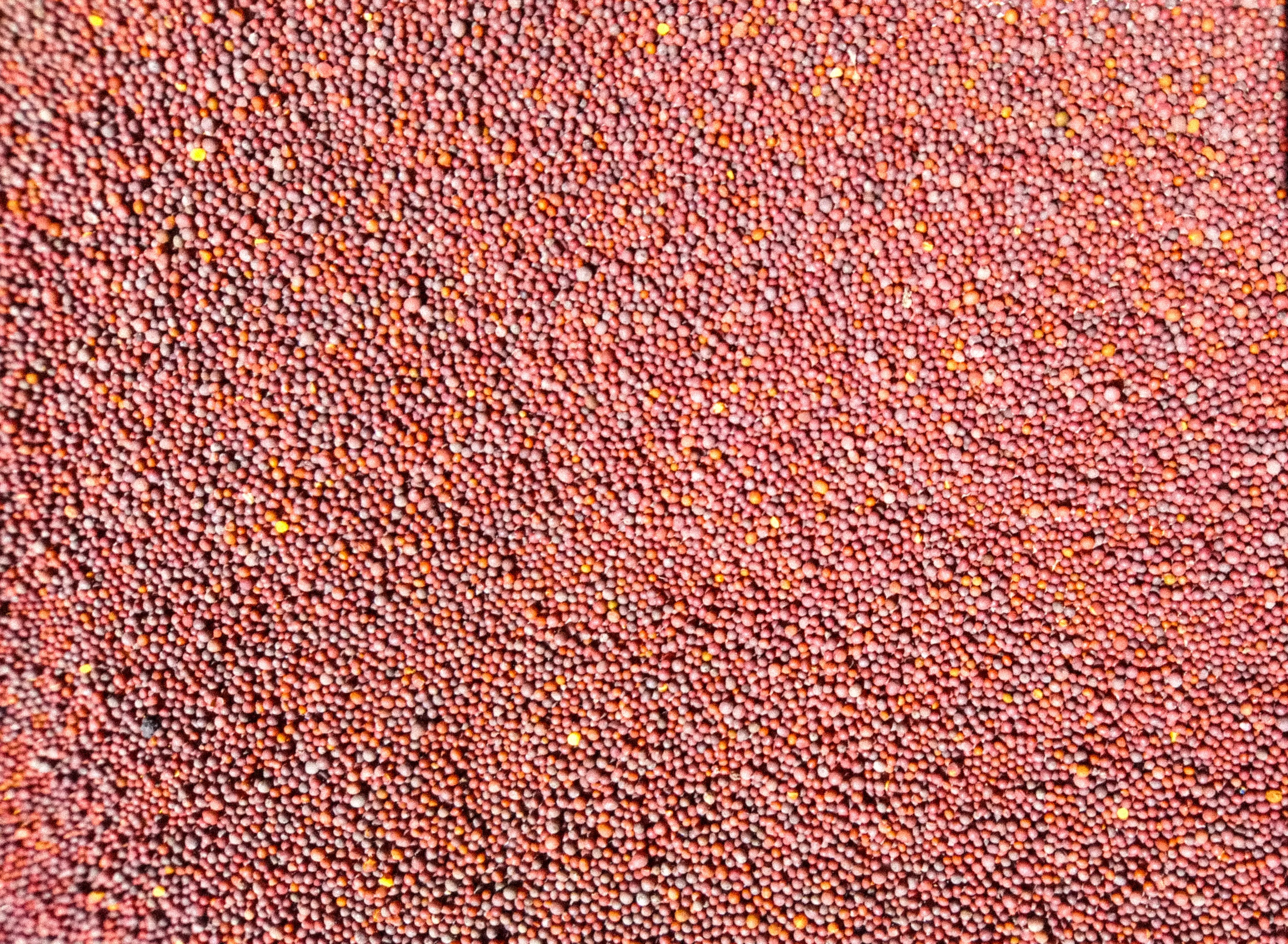
🌱 Radishes
Are one of the most rapidly growing microgreens. Sow 1 teaspoon of seed into a small tray, and cover with about a seed's depth of compost. Water gently and leave on a windowsill.
They should be ready in about 2 weeks. Thy are most tasty when first set of true leaves develop. Packs of mixed radish seed work well.
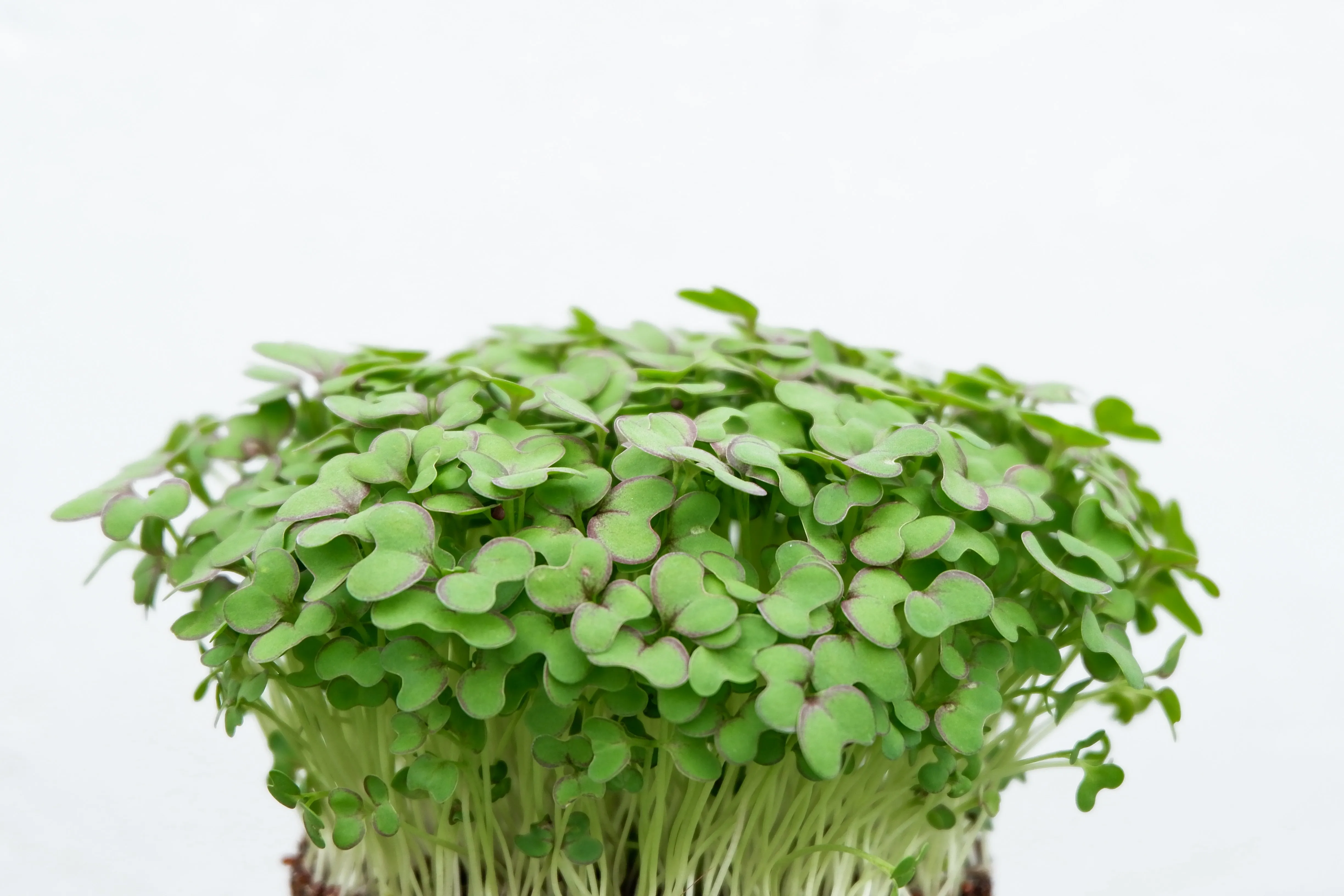
🌱 Fenugreek
Is a spicy green that can be sown using seed from an Asian store. Sow 2 teaspoons of seed into a small tray and cover with a seed's depth of compost.
Water gently and leave on a windowsill. Fenugreek will be ready in about 3 weeks adding a peppery curry flavour to salads.
🌱 Chickpea Microgreens
😲 Did you know you can eat this nutritional powerhouse packed with essential vitamins and minerals??!!
🌱 Pre-soaking Peas and Chickpeas for Tasty Microgreens
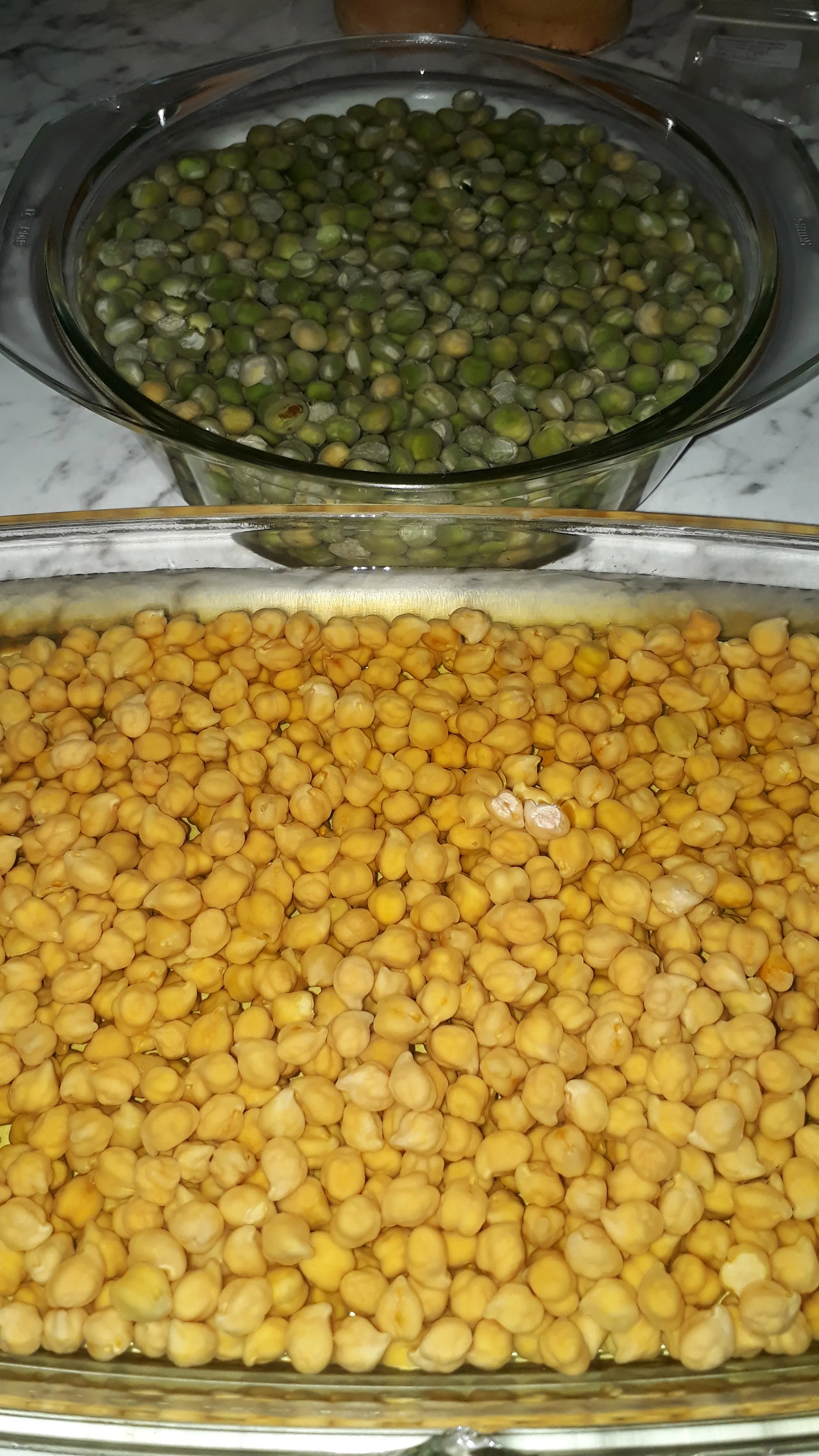

🙌 They are very easy to grow!
🌱 𝗕𝘂𝗰𝗸𝘄𝗵𝗲𝗮𝘁 𝗟𝗲𝘁𝘁𝘂𝗰𝗲 𝗮𝗸𝗮 𝗕𝘂𝗰𝗸𝘄𝗵𝗲𝗮𝘁 𝗠𝗶𝗰𝗿𝗼𝗴𝗿𝗲𝗲𝗻𝘀
🥗 Enhance your salads and sandwiches with fresh, Buckwheat Lettuce. Also known as buckwheat microgreens, these tender, tiny greens are rich in vitamins A and C, with a tangy, mildly citrus taste. Try them sprinkled on a lemon and herb chicken salad to boost flavour.
🤤 The choice is yours. Play with it!

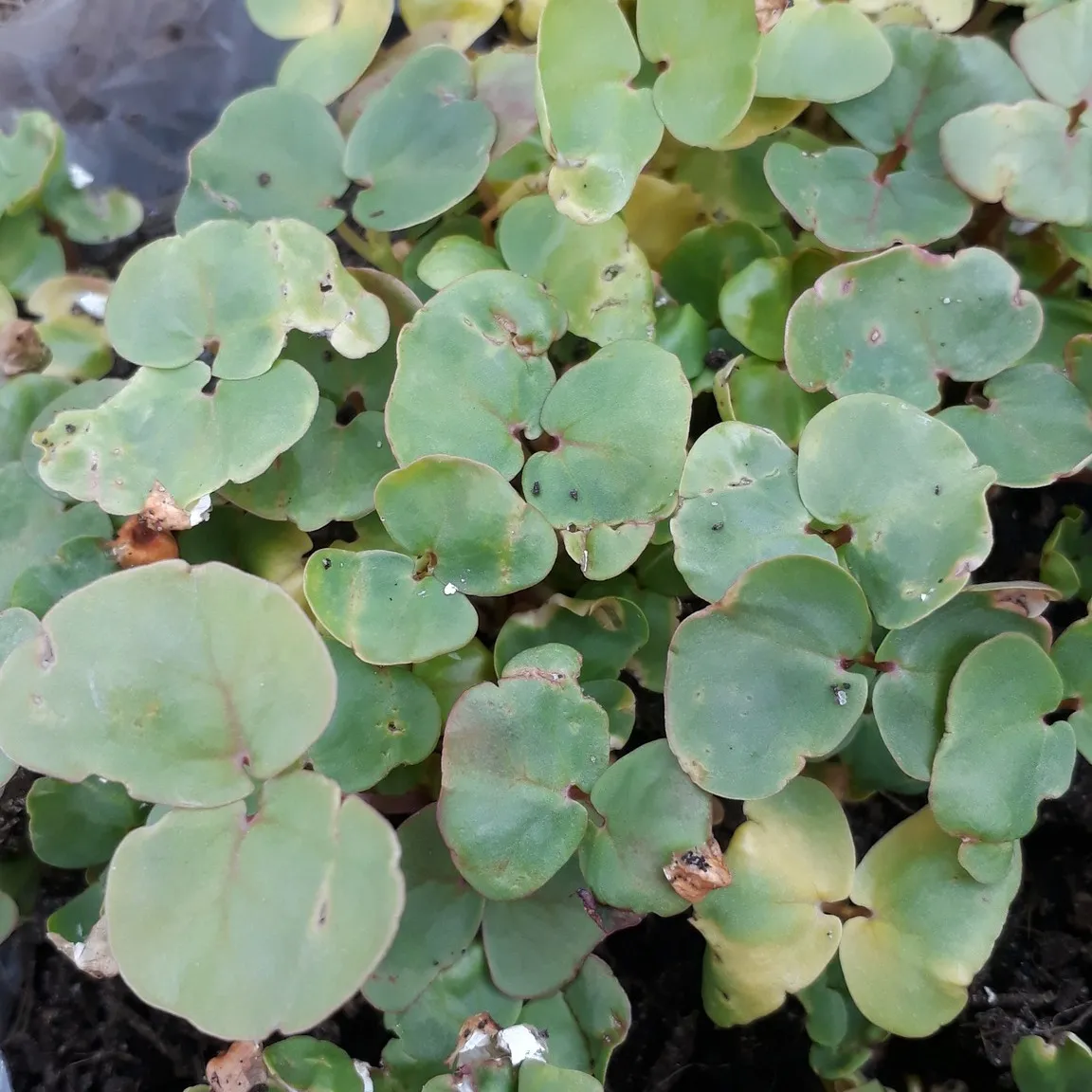
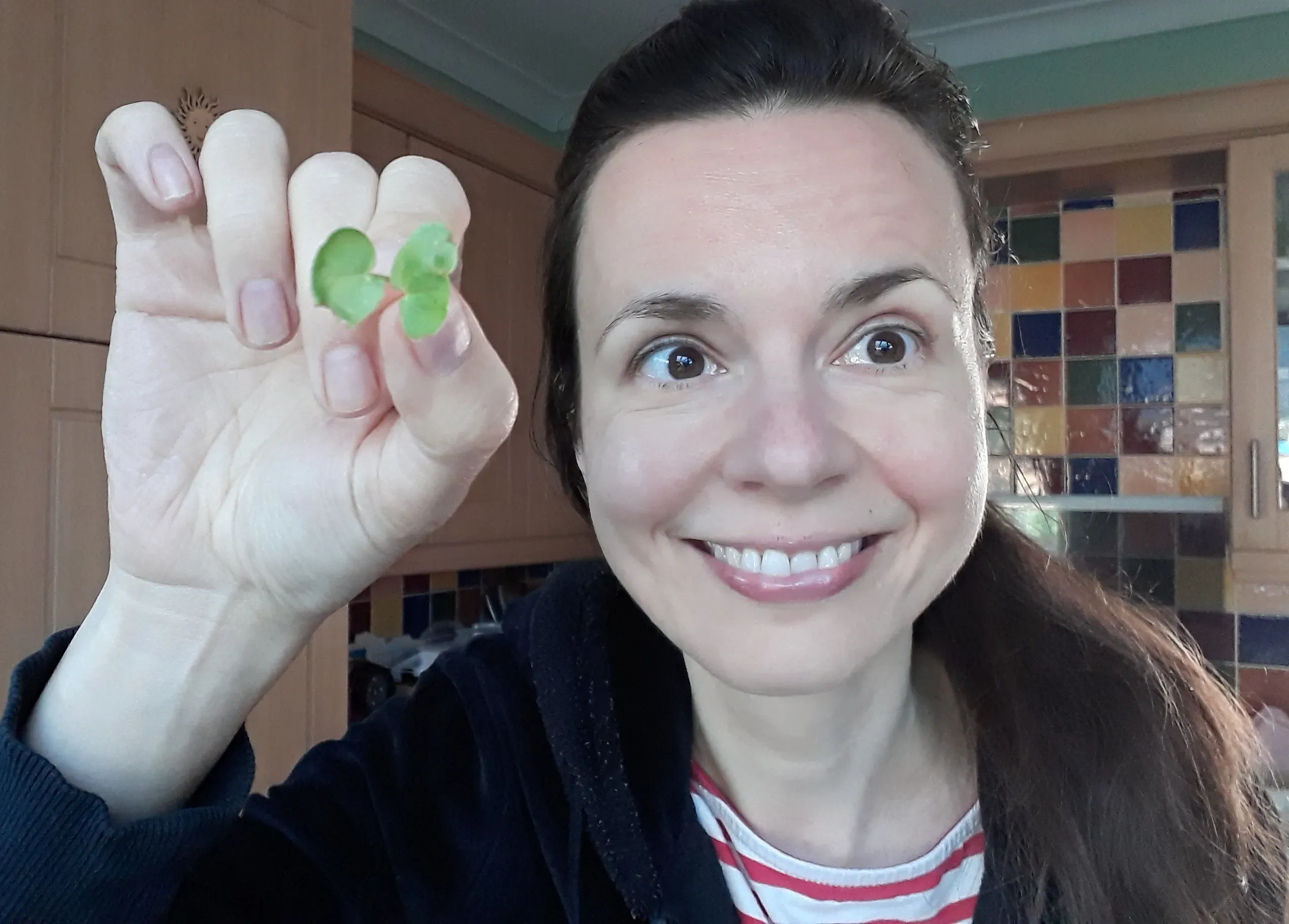
🌱 Broccoli & Flax Seeds
🌱 Broccoli microgreens are one of the easiest to grow. The greens are delicious; their flavour is distinctly that of full grown broccoli; some say cabbage.
As a health-giving vegetable, broccoli is hailed as one of the 'superfoods'. It's low in fat and high in dietary fibre, and rich in iron, minerals and vitamins A and C.
🌱 Flax Seeds
Because of its mucilaginous nature when germinating, flax seed is best grown and cut as a microgreen rather than as a sprout. It makes a gooey mess before rotting if you try to sprout in a jar.
Flax has been used as a fibre for over 20,000 years and more recently as a decorative plant.
The seed comes in two basic varieties: brown and yellow/golden. Either can be used.
👇 In the picture below I'm using brown ones.

📗 I give you also some reading tips in case you’d like to find out more about microgreens. You can read 𝗛𝗼𝘄 𝗧𝗼 𝗚𝗿𝗼𝘄 𝗠𝗶𝗰𝗿𝗼𝗴𝗿𝗲𝗲𝗻𝘀 𝗯𝘆 𝗙𝗶𝗼𝗻𝗻𝗮 𝗛𝗶𝗹𝗹.
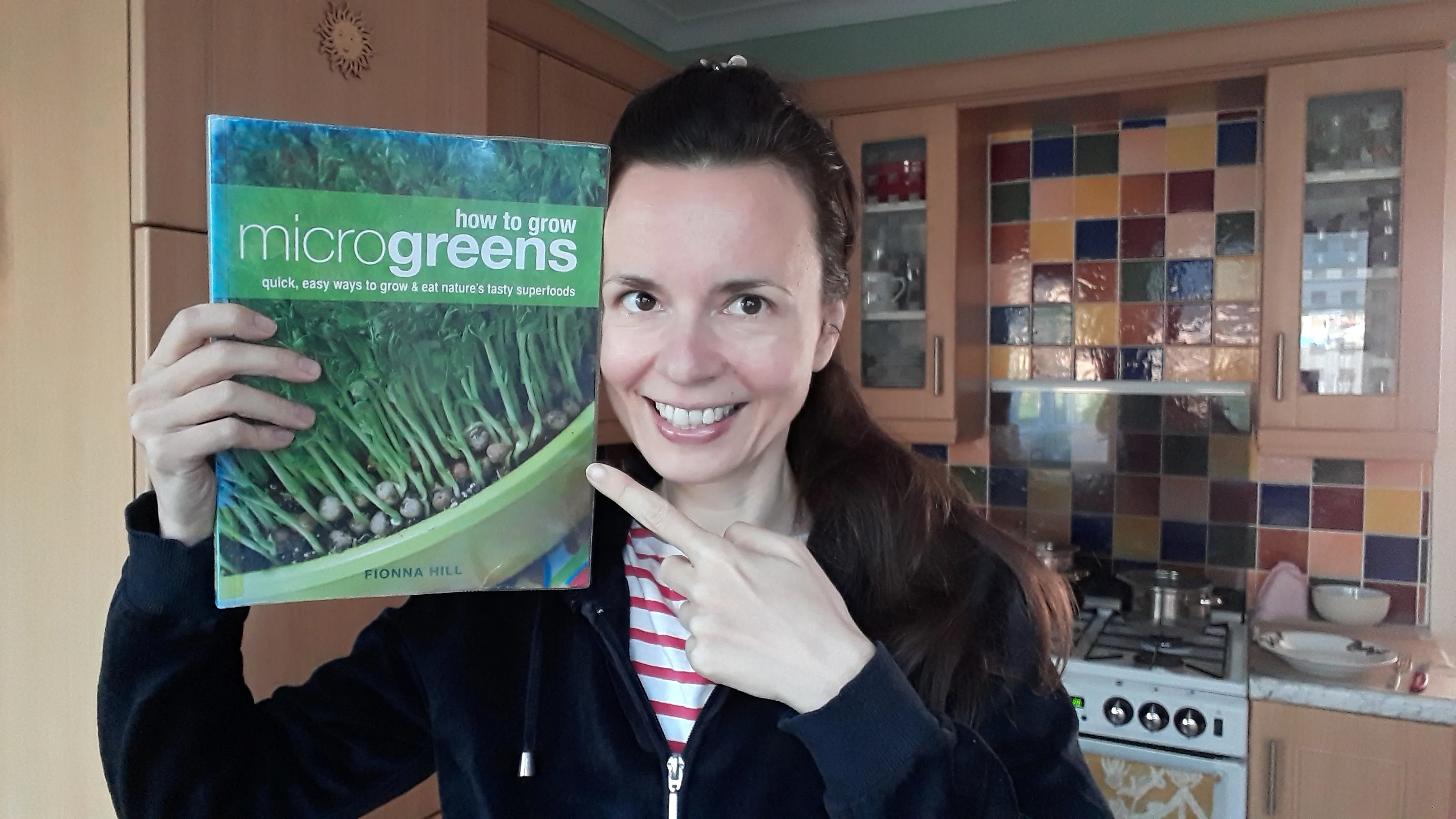
📚𝗖𝗵𝗮𝗽𝘁𝗲𝗿𝘀:
• Introduction: Houseplants You Can Eat
• Growing Microgreens
• Solving Plant Problems
• Nutrition
• Individual crops
• Children Growing Microgreens
• Recipes
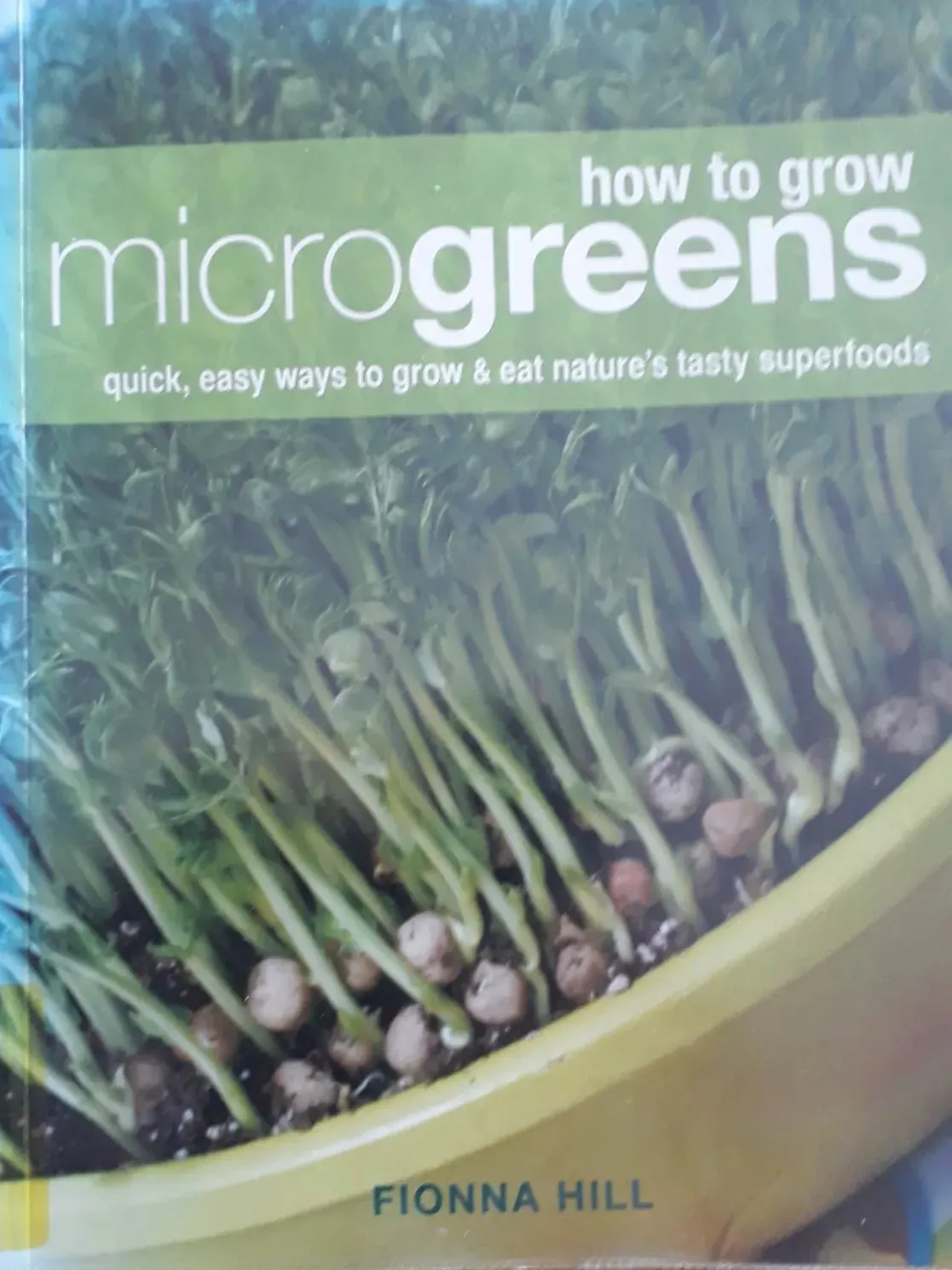
🌱 Individual Crops Which Are Described in Fionna's Book
Amaranth; Cress; Peas
Basil; Fennel; Radish;
Beet; Fenugreek; Rocket
Broccoli; Flax; Wheatgrass
Cabbage; Kale; Chives
Mizuna; Clover; Mustard
Corn; Parsley
🌱 Wheatgrass
Wheatgrass is the young grass of a common wheat plant. As a microgreen it has been around for year. Although classed as microgreen, it is used in an entirely different way - to make a health-promoting juice.
Wheatgrass juice is abundant in vitamins, minerals, enzymes, protein and chlorophyll. It contains every amino acid, vitamin and mineral necessary for human nutrition, making it one of the few actual 'whole foods.'
It is so nutrient-rich that only 30ml of freshly squeezed wheatgrass juice is equivalent in nutritional value to 1 kg of leafy green vegetables.
❤️ I love tasting new flavours.
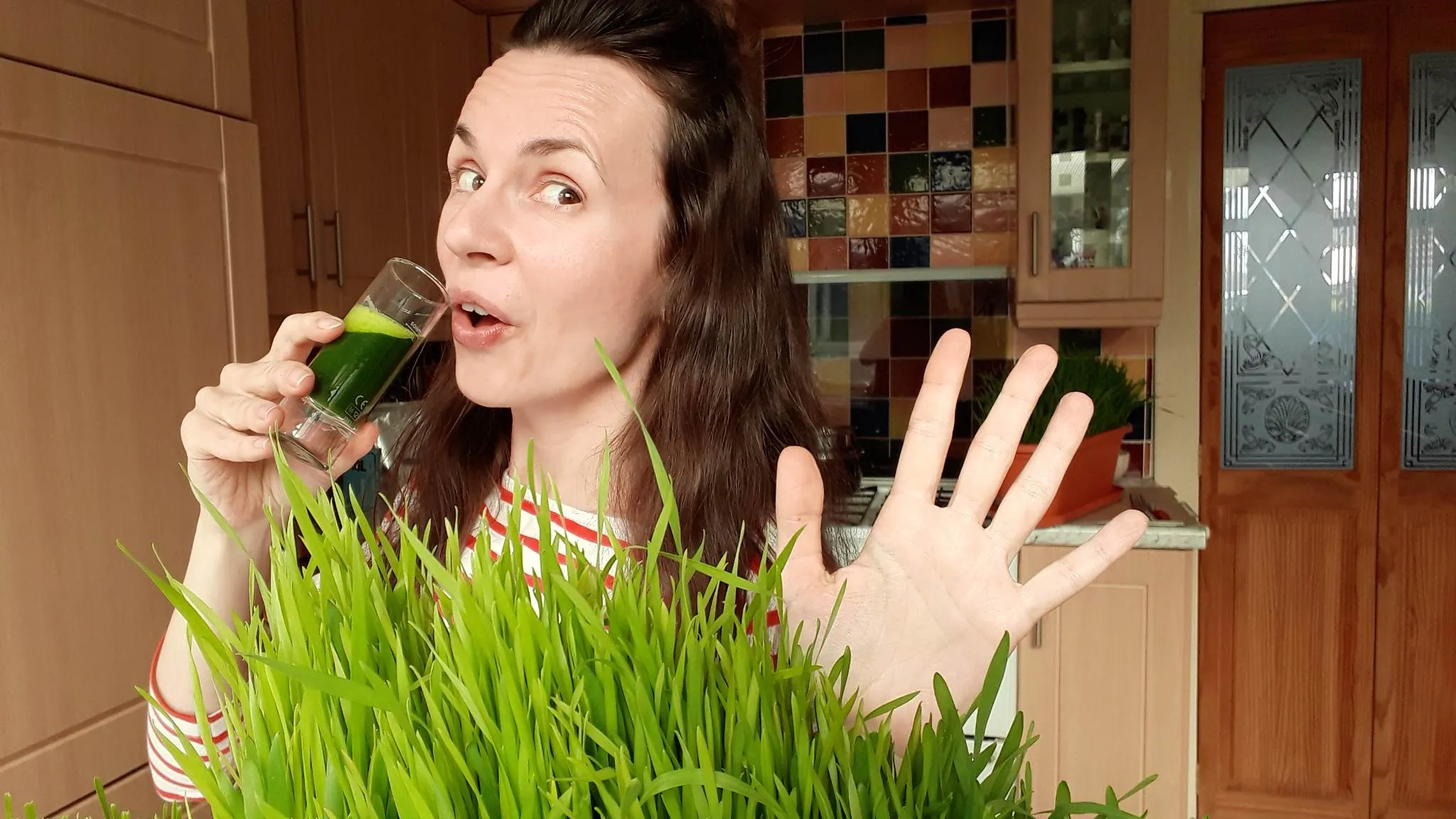
🌱 What I have grown so far:
Wheatgrass
Spelt Grass
Rye Grass
And I got some Barley Grass from Abel & Cole.
😂 And I'm sure I'll think of something else.
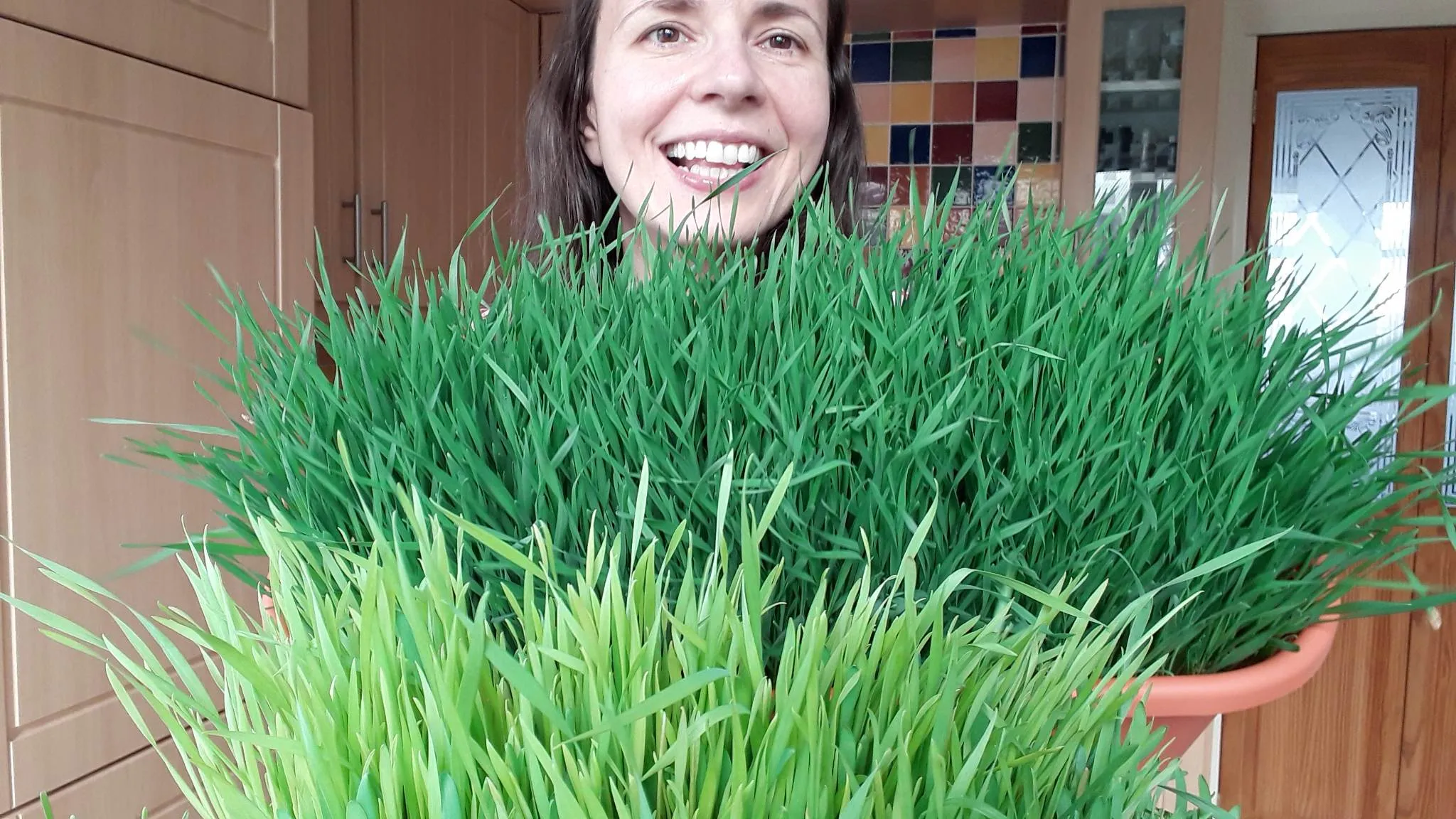
🌱 On my to grow list it's definitely Amaranth!!!! this year.
I'm super excited about this grain. I used it for my breakfast a couple of years ago. But when I saw the lovely picture of purple & green leaves, it was a game changer. I have to grow it this year. No matter what!
💚 It is very easy and quick to grow and can be eaten as a microgreen, baby leaf or up to mature leaf size.
It adds colour, flavour and texture to a fresh home-grown gourmet salad when harvested at microgreen or baby leaf stage but large mature sized leaves should be steamed and used like spinach.
It is a great spinach replacement when grown outdoors. If you find that your spinach and chard bolt in summer, then this veg positively thrives in the hot weather!
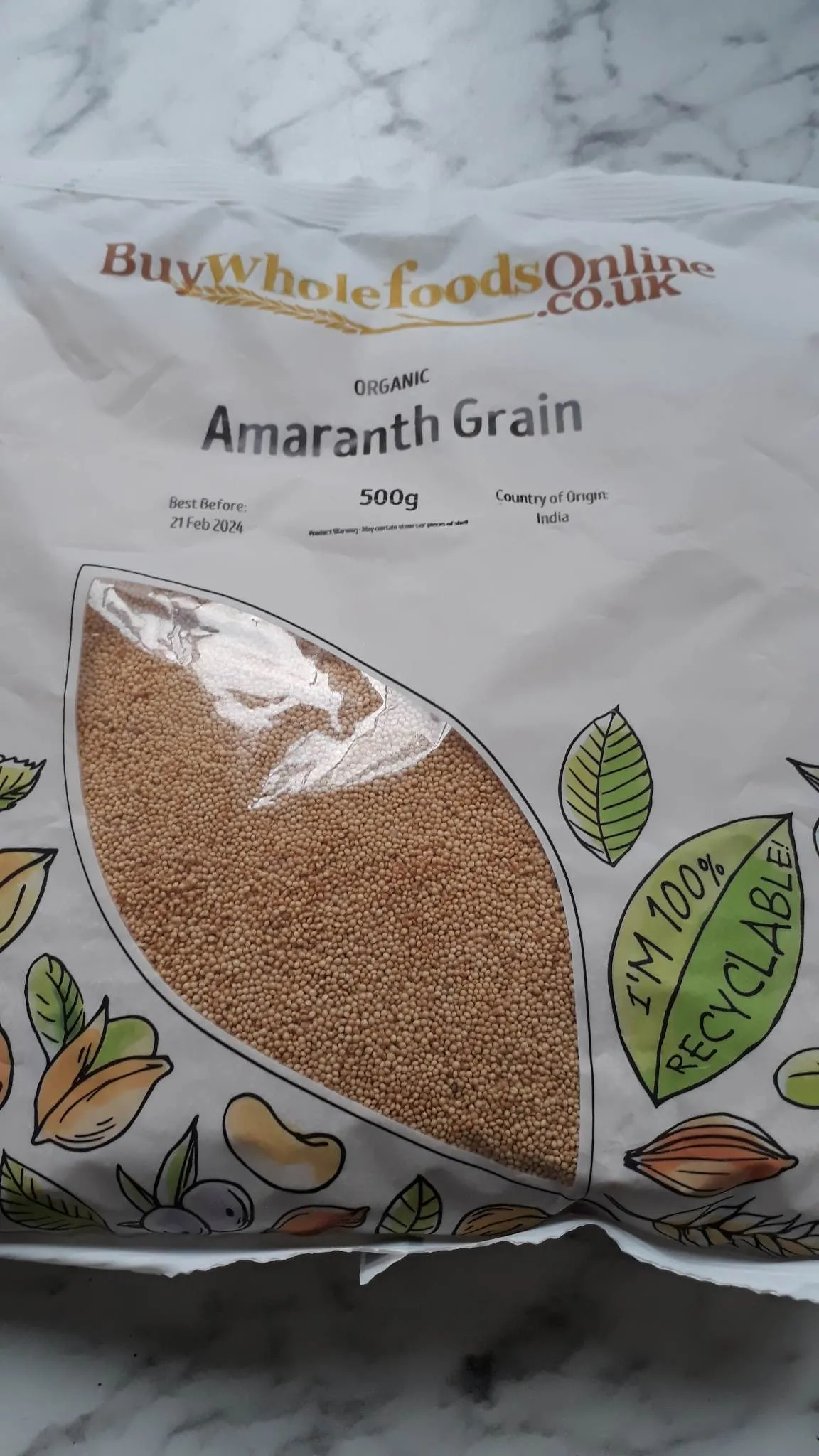
🌱 The seeds are very small; they are the size of poppy seeds.

🌞 It likes warm weather and considering this cold spring, I'll wait with planting until the end of May. I'll try to grow it for leaves first. I'm going on holiday for 2 weeks, I'll plant it out before I leave and see what I'll come back too.
📚 Picture below is used from Fionna's book. I can't wait to grow mine!
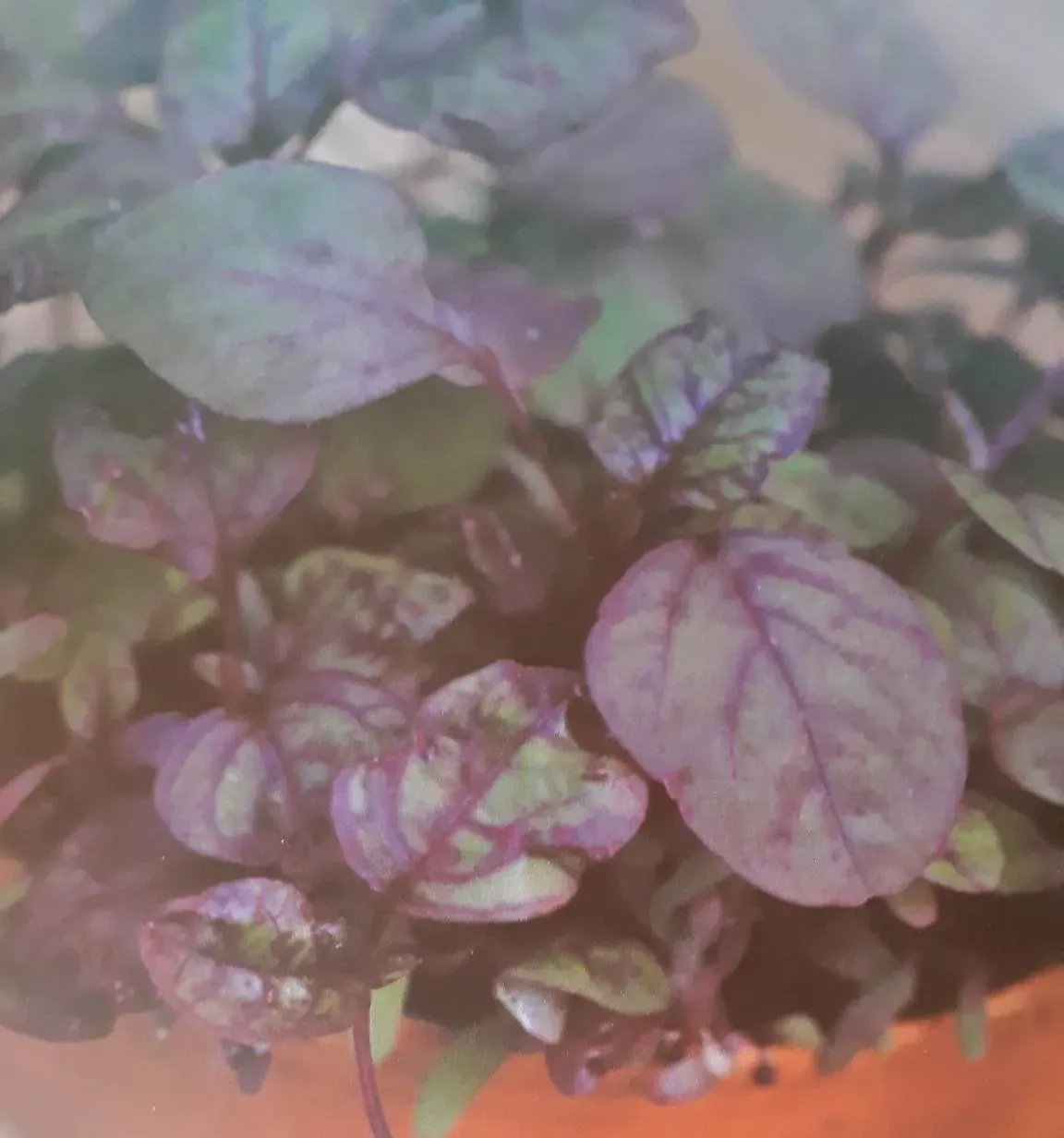
🌱 Black Lentils
What am I doing right now? I try black lentils microgreens for the first time. It's been pre-sprouted and ready to plant. Btw, the sprouts are lovely too!
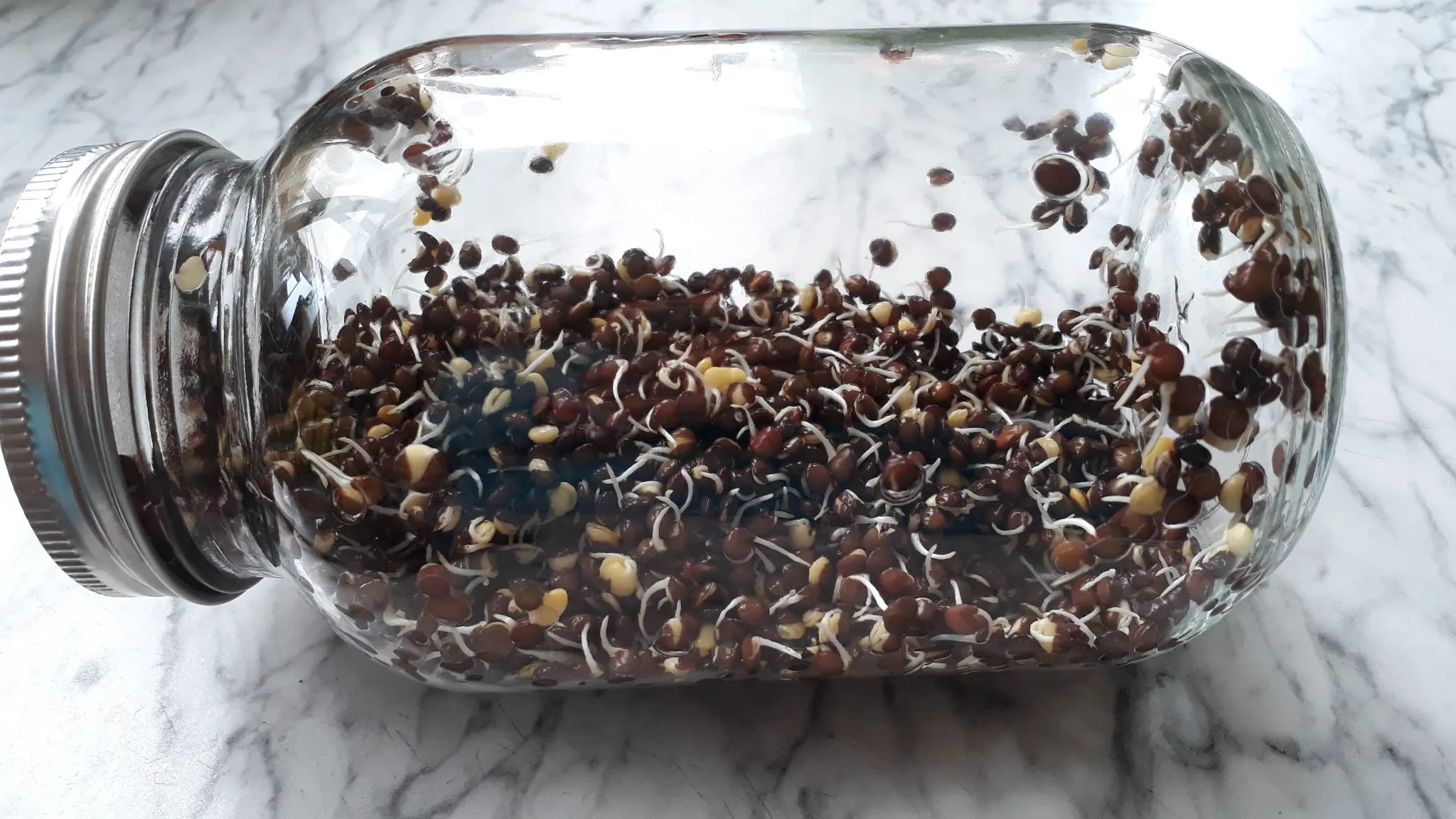
🖤 Black lentils, also known as Beluga lentils are an impressive black colour. They have a deep earth-like flavour with a firm texture and are the healthiest of all the types of lentils.
💪 Because of their nutritional content, black beluga lentils are one of the healthiest legumes out there, they are packed full of fibre and an abundance of vital vitamins and minerals.
❓ I’m curious to know what microgreens are you growing at the moment ❓
Is it Amaranth, Basil, Beet, Broccoli, Cabbage, Chives, Clover, Corn, Cress, Fennel, Fenugreek, Flax, Kale, Mizuna, Mustard, Parsley, Peas, Chickpeas, Radish, Rocket, Wheatgrass or Something Else?
👇 𝗟𝗲𝘁 𝗺𝗲 𝗸𝗻𝗼𝘄 𝗶𝗻 𝘁𝗵𝗲 𝗰𝗼𝗺𝗺𝗲𝗻𝘁𝘀 𝗯𝗲𝗹𝗼𝘄.
🥰 I hope it inspires you.
💋 Happy Spring To You! Enjoy This Wonderful Season.
From my heart ❤️ to your heart.❤️


